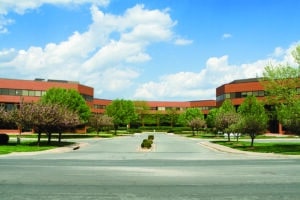
The flood of homebuyers to Boston’s exurbs hasn’t translated into renewed demand for space in the Interstate 495 beltways’ office parks.
Home prices in suburban Boston have surged during the pandemic, with disenchanted urbanites and others looking for more space to spread out.
But the mini-exodus from region’s urban core has had only a limited impact, if that, on the commercial real estate market in Greater Boston’s sprawling suburbs.
The disconnect between rising homebuyer interest and a local office market that continues to languish can is most stark along Interstate 495, home to an array of outer suburbs, from Mansfield and Franklin in the south through Marlborough and Hopkinton and on up to Lawrence, Lowell and Haverhill in the Merrimack Valley
Buyers snapped up single-family homes in the outer suburbs along I-495 in 2021, with Franklin and Hopkinton both seeing sales jump by more than 20 percent.
Median sale prices also surged, with Hopkinton leading the way, rising nearly 27 percent to a median price of $850,000, according to The Warren Group, publisher of Banker & Tradesman. Further north, Southborough saw single-family home sales surge 22 percent in 2021 through November, while the median price rose nearly 10 percent to $804,000.
Yet, these same, relatively well-off towns also have the highest office vacancy rates in the Boston area.
Companies along the 495 corridor continue to dump large amounts of empty space on the market, totaling nearly 600,000 square feet over the course of 2021, according to stats from Lincoln Property Co. There is also no new office construction underway along the exurban beltway, either, which has struggled since the demise of its large corporate tech campus in the early 2000s.
The vacancy rate for the entire 495 office market topped 22 percent in the fourth quarter of 2021.
The intersection between 495 and Route 2, and the highway’s northeast span through the Merrimack Valley, has the distinction of the highest office vacancy rates in the Boston area, totaling 28 percent and 24 percent of sublease and direct space, respectively.
Life Science to the Rescue
By contrast, the Route 128 belt, which includes office powerhouse Waltham, has managed to steam ahead amid the turmoil of the pandemic. Its vacancy rate is comparable to that of the downtown Boston market, which is typically much lower than its suburbs.
America’s original “Technology Highway” has a total office availability of 17.8 percent, not that much higher than the 16.5 percent vacancy rate in the Boston market.
And while companies on 495 continue to shed space, office buildings along the 128 belt also managed to fill more than 230,000 empty square feet over the last year.
Like their counterparts on 495, prices in these upscale suburbs hit new heights during the pandemic, with the median single-family home price in Lexington rising to nearly $1.5 million.
But, also like 495, the flow of buyers out of Boston is likely playing only a bit role in the fortunes of the office and commercial real estate market along 128.
Rather, the booming life sciences sector is the prime reason 128 is rebounding, even as 495 largely languishes – in fact, one of the few exceptions to this latter trend proves the rule. Giant biotech developer Alexandria Real Estate Equities plunked down $314 million for eight buildings in Andover’s Minuteman Park last week that have life science or biomanufacturing redevelopment potential.
Waltham’s Trajectory: Up
As fast-growing biotech and other companies run of space to grow in Cambridge, they are moving west into Waltham and Lexington. This market is poised to expand to more than 15 million square feet of commercial space over the next few years, up from 10 million now, said Brendan Carroll, research chief at commercial real estate firm Cushman & Wakefield.

Scott Van Voorhis
There is also a steady stream of landlords converting their buildings into lab space, which could cause the office market to shrink, Lincoln Property Co. noted in its own recent report. In particular, conversions make up a significant amount of the 4 million square feet of mostly life sciences space now under construction along Route 128.
Waltham is already one of the largest suburban office markets in the country, and it looks set to only grow more important.
“The area has been a logical next place to go if you are a Cambridge genius,” Carroll said. “There are enormous densities of leading scientists and researchers in the area.”
Scott Van Voorhis is Banker & Tradesman’s columnist; opinions expressed are his own. He may be reached at sbvanvoorhis@hotmail.com.




 |
| 
